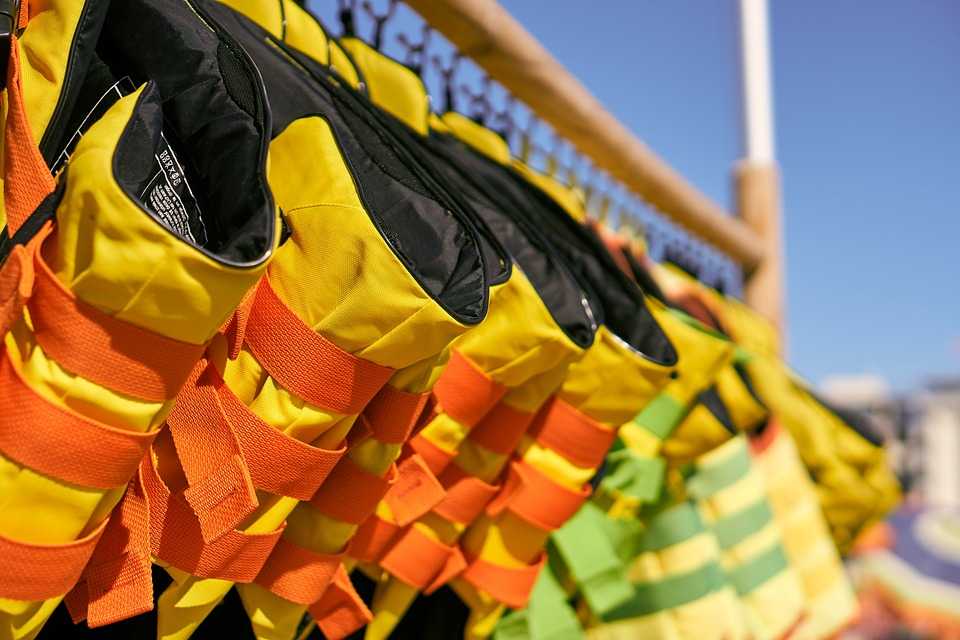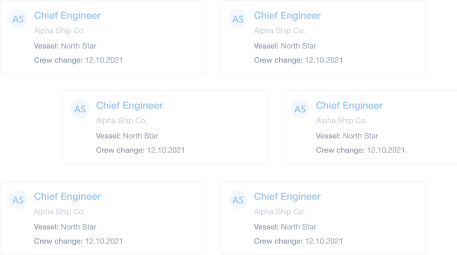Everything You Ever Wanted to Know About Life Jackets
Nov 07, 2022 · 8 mins read ·
Shipping & Vessels
Life jackets aren’t some strange device you haven’t seen or used before – you usually wear them when you’re on a boat or when you participate in water-related activities. They give you the comfort of knowing that this inflatable neon-colored jacket can (and probably will) save you from drowning should the unthinkable occur.
Now, strap your jackets on and let’s take a dip in the territory of this lightweight life-saving piece of equipment.
What is a life jacket?
According to the dictionary, a life jacket is a life preserver in the form of a buoyant jacket. This sleeveless inflatable jacket is also known as a personal flotation device and it aims to prevent drowning by keeping the wearer afloat when water-related accidents occur.
Don’t think that a life jacket is a modern invention – they have been used since the mid-1800s and were initially designed with cork as the buoyant material.
As per the author of Designed for Life: Life Jackets Through the Ages, Dr. Christopher Brooks, the life jackets we are familiar with today were first introduced in the 1850s when boats made from iron were starting to take the place of wooden vessels.
However, the life jackets that we know now are typically made using plastic foam that is made from polyvinyl chloride and polyethylene due to their buoyancy properties, while the outer shell is typically made of either nylon or neoprene.
Life jackets also come in a range of sizes and are mostly made with vibrant colors and reflective strips so rescuers can easily spot the wearers that need help from afar.
What is the importance of a life jacket?
According to the World Health Organization (WHO), drowning is the 3rd leading cause of unintentional injury or death worldwide, accounting for 7% of all injury-related deaths. In addition, the CDC, the U.S. Coast Guard reported 613 boating-related deaths in 2019 wherein 79% were drowning-related and 86% of fatalities were not wearing life jackets.
The life jacket proves to have a great significance – whether on a ship or just participating in water-related activities – since it can be the only equipment that can save a life after an accident.
So when you’re out at sea or whenever you’re on or near water, don’t forget to wear that life jacket because your life may depend on it.
What are the different types of life jackets?
There are three types of life jackets you can wear: Inherently buoyant, inflatable, and the hybrid.
Inherently buoyant life jacketsThis type of life jacket is filled with foam and doesn’t need any activation from the wearer since it floats on its own. It is known to be versatile and low-maintenance – it just needs to be dried out in the sun and it comes in three different types.
Type I
This jacket is usually found on commercial fishing or charter boats and on larger passenger vessels that are required to carry a commercially approved personal flotation device (PFD) for every passenger. It is designed to be stored without taking up a lot of space. And while it provides protection, it can be uncomfortable to wear.
The Type I jackets contain more foam than the other types and therefore provide more buoyancy, however they look similar to the Type II life jackets. Type I jackets are best for open, rough, or remote water. They provide at least 22 lbs of buoyancy for the average adult.
Type II
The Type II is a life jacket used for inland day cruising, fishing, and sailing. This jacket is much more comfortable to wear than your Type I jacket, but it is less buoyant and provides less flotation. It also doesn’t perform as well in rough water. Its minimum buoyancy is at least 15.5 lbs for adults.
Type IIIThis type of jacket is worn while participating in water-related recreational activities such as water skiing, dinghy races, kayaking, canoeing, or fishing. Some Type III jackets are also used as work jackets for people who work on docks or in marine construction near water.
The minimum buoyancy for this jacket is 15.5 lbs for an average sized adult.
Inflatable life jacketsUnlike the inherently buoyant life jackets, the inflatable jackets don’t use foam. These jackets depend on an inflatable chamber to keep the wearer afloat in the water. Due to this, this type of jacket is smaller in size and is more comfortable to wear than the life jacket with foam.
You have to inflate this jacket – no worries though because they are pretty quick to inflate. So how does it work? The jackets have cartridges of carbon dioxide gas that can be activated and which will then fill the chambers of the jacket with gas.
Furthermore, some inflatable jackets have models that can be activated manually, automatically, and hydrostatically.
Fun fact: This type of life jacket has been used since World War II!
Hybrid life jacketsThis jacket is – well, you guessed it – a combination of the foam and inflatable life jacket. The hybrid jacket makes use of the buoyancy from the inherently buoyant material, but also uses the manual inflation for an extra boost of buoyancy.
This type can be used for boating activities where the buoyancy and mobility of the life jacket are both needed. It also has a minimum buoyancy of 7.5 lbs of built-in foam and can be inflated to 22 lbs.
In addition, this jacket is more comfortable to wear than the Type I and Type II inherently buoyant life jackets.
SOLAS requirements
Did all this life jacket talk make you miss the sea? Well, before you go, let’s make sure your life jacket is in accordance with SOLAS!
The International Convention for the Safety of Life at Sea (SOLAS) requires every person onboard a vessel to have a personal life jacket with extra jackets for watch keepers. It also stipulates that an extra 5% of life jackets should be present at the muster stations and embarkation stations.
Each life jacket should have a whistle that is firmly secured by a lanyard with a retro reflective tape and a manual igniting light. It should also be provided with a resealable buoyant line and the means to allow rescuers to lift the wearer from the water into a rescue boat.
The materials of the life jacket must be non-flammable or synthetic buoyant material.
The life jacket must be able to be donned without any help in one minute. Also, it should be capable of surviving the impact of jumping from a height of at least 4.5 meters into the water.
More about the SOLAS Convention can be read here.
We hope we answered some of your life jacket questions. If you want to know more about maritime life, don’t hesitate to visit our blogs!

Nathaly Seruela
Former content writer at Martide.

is the only site for maritime jobs



